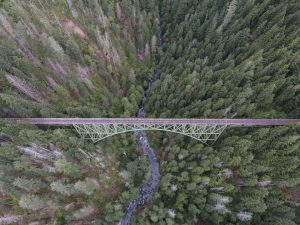In this season of political hyperbole – even more so than normal – I feel compelled to write an article on how to build bridges in the world of public policy.
If you work in public policy, you are  passionate about what you believe. You have spent a lifetime developing your philosophies and worldview, looking at problems and thinking through solutions. You listened to your friends, mentors, teachers, and parents, read, debated, watched the news, and debated more. Your beliefs are built into your core, defining who you are. You believe they are the best solutions and you have invested your career to bring those solutions to reality.
passionate about what you believe. You have spent a lifetime developing your philosophies and worldview, looking at problems and thinking through solutions. You listened to your friends, mentors, teachers, and parents, read, debated, watched the news, and debated more. Your beliefs are built into your core, defining who you are. You believe they are the best solutions and you have invested your career to bring those solutions to reality.
Right next to you, someone else did the same thing, but came to different solutions. That is okay – iron sharpens iron, and our country is better for it.
As we all work to make America great (sorry, couldn’t resist), there are a few things we can all do to tear down walls and build bridges, improving our chances of getting our solutions implemented:
1) Obey the Golden Rule – Treat others like you would want to be treated. Enough said.
2) Recognize we have common goals – Realize we are generally working towards the same goals. We all want jobs, a clean environment, good roads, safe neighborhoods, solid education, etc. Telling people someone wants bad schools, a dirty environment, to destroy jobs, etc. is disingenuous and will strengthen their resolve. This is different than saying their policies might lead to that. Recognizing they share your general goals but have a different approach gives them the respect they deserve and opens their ears to your approaches.
3) Realize we are driven by our beliefs – As I mentioned earlier, we work in public policy because we are passionate about it and have solutions, philosophies, and worldviews that have developed over decades and make us who we are. We align with parties, constituencies, and politicians because we share a common vision. We know we have the best solutions, so when someone disagrees, we have to rationalize why in our minds (“It is because so-and-so donated money” or “They aren’t listening to us.”). When you realize that people donate money to support people who already share the same philosophy or that, yes, they heard you, they just disagree, you will build more of the bridge.
4) Avoid the snarky and mean – Snarky web videos, protests, obnoxious behavior, etc. can get your supporters riled up and excited, but they will also burn bridges. No one has ever seen a protest aimed at them (or their beliefs), an attack ad, video, etc. and thought, “You know what, that makes sense, I am going to do what they want.” Quite the opposite.
5) Reach out – Your bridge isn’t complete until it has reached the other side. Reach out, talk, understand, and see Tip #1. Without at least trying to understand each other, your bridge will never be complete.
There will always be bomb-throwers, Internet trolls, organizations who choose enemies to raise money over finding solutions, but when you take the extra time and effort to build bridges, you can go to sleep at night knowing your solutions ended up winning and making a difference in our world.
